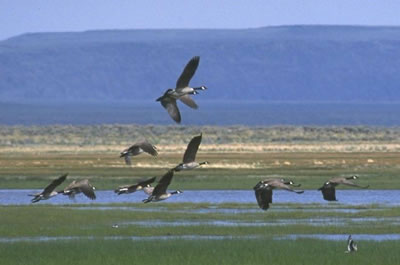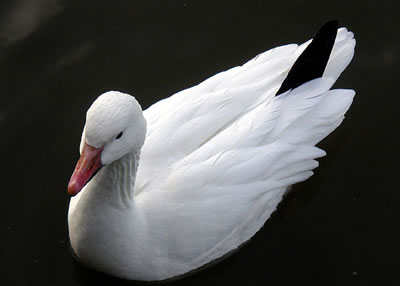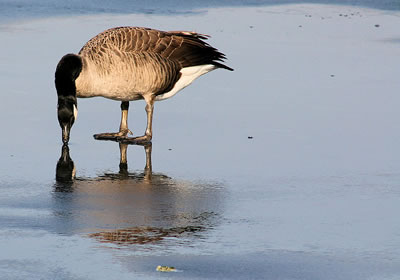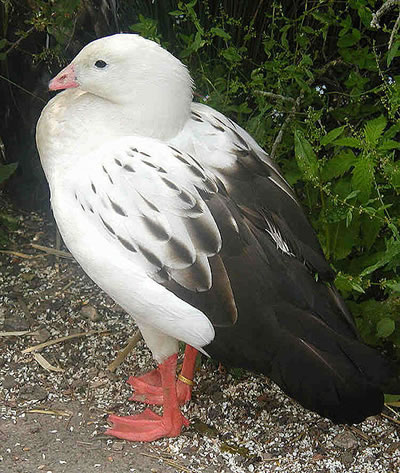Geese

Facts about creatures
- Home
- Animal Classification
- Animal Habitats
- Amphibians
- Arthropods
- Bats
- Birds
- Carnivorans
- Cetaceans
- Chordates
- Crustaceans
- Dinosaurs
- Diprotodonts
- Elephants
- Fish
- Golden Mole
- Insects
- Lagomorphs
- Mammals
- Mammal Teeth
- Marsupial Mole
- Metamorphosis
- Mollusks
- Primates
- Reptiles
- Rodents
- Ruminants
- Soricomorphans
- Tenrec
- Tetrapods
- Vertebrates
Geese
Geese are water birds that, along with ducks and swans, belong to the family Anatidae.
Anatidae is a family within the order of aquatic birds known as Anseriformes.
Geese tend to be larger than ducks, but smaller than swans.
The beaks, or bills, of geese tend to be more pointed than the bills of ducks. The neck of a goose is longer than a duck’s neck but shorter than a swan’s neck, in proportion to its body.

Geese eat plants and small animals, including insects. They can often be found grazing on grass near water.
Most species of geese migrate.
Geese are monogamous. Sometimes, a pair will remain together for their entire lives.
They are gregarious birds, and in the winter, they often congregate in very large flocks (groups).
Humans value geese for their meat, their eggs and their feathers, particularly their down, which is used for insulation.
Down is a layer of fine feathers that grow beneath a bird’s outer feathers.
Very young birds are covered only in down.
People hunt geese and raise domestic geese.
Geese were domesticated by humans at least 5000 years ago.
A male goose is known as a gander, and an immature goose is called a gosling. A flock of geese is known as a skein if the geese are flying and a gaggle if the geese are on the ground.
The three main genera of geese are Anser, or gray geese, Chen, or white geese, and Branta, or black geese.
There are birds which are not in those genera, but are also called geese – for example: sheldgeese and the magpie goose.
However, gray geese, white geese and black geese are the only geese known as true geese.
Most true geese live in the Earth’s northern hemisphere.
Gray Geese
Gray geese have gray or white bodies, wings and necks. They have orange, pink or black bills and pink or orange legs and feet.
They have serrated bills.
The largest gray goose is the graylag goose (Anser anser), which weighs between 5 ½ and 9 pounds.
The graylag goose is the ancestor of the domesticated geese that are found in North America and in Europe.


White Geese
White geese have heads that are completely white. Their wings and bodies are either white or bluish gray.
Their bills, legs and feet are pink or orange.
Like gray geese, white geese have serrated bills.
White geese breed just south of the Arctic Circle. They migrate further south for the winter
There are three species of white geese – the snow goose (Chen caerulescens), the emperor goose (Chen canagica) and Ross’s goose (Chen rossii).
Some ornithologists think that white geese should be included in the genus Anser (gray geese).
Black Geese
Black geese have large black sections on their heads and necks. Their feet and legs are either black or dark gray.
Their bills are not noticeably serrated.
The Canada goose (Branta canadensis), the largest goose in the world, is a black goose. Some Canada geese weigh more than 20 pounds.


Sheldgeese
Sheldgeese belong to the genus Chloephaga, which is in the family Anatidae.
They are not considered true geese.
Like shelducks, they share characteristics of both ducks and geese.
Sheldgeese have small bills and long legs.
They are larger than shelducks.